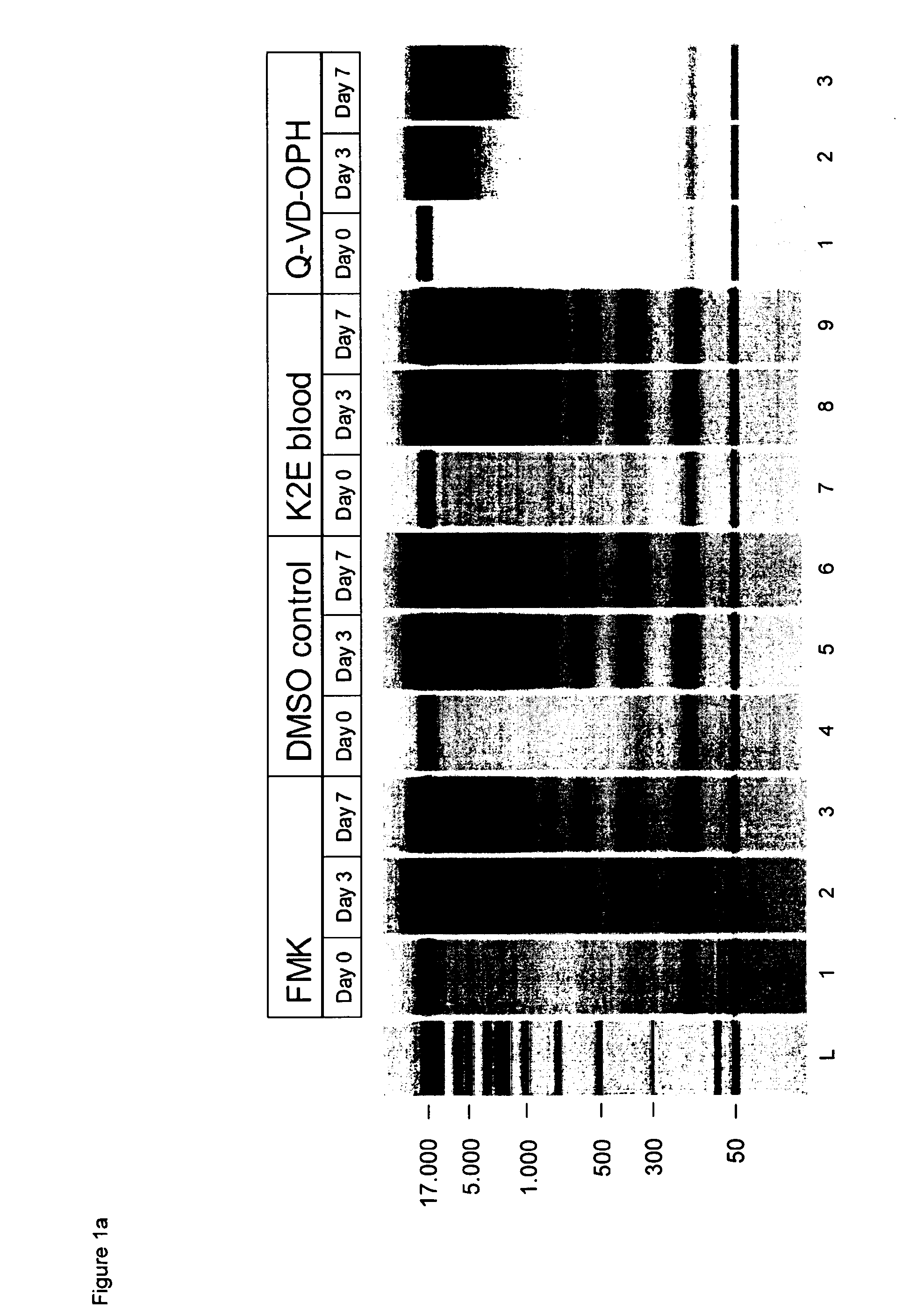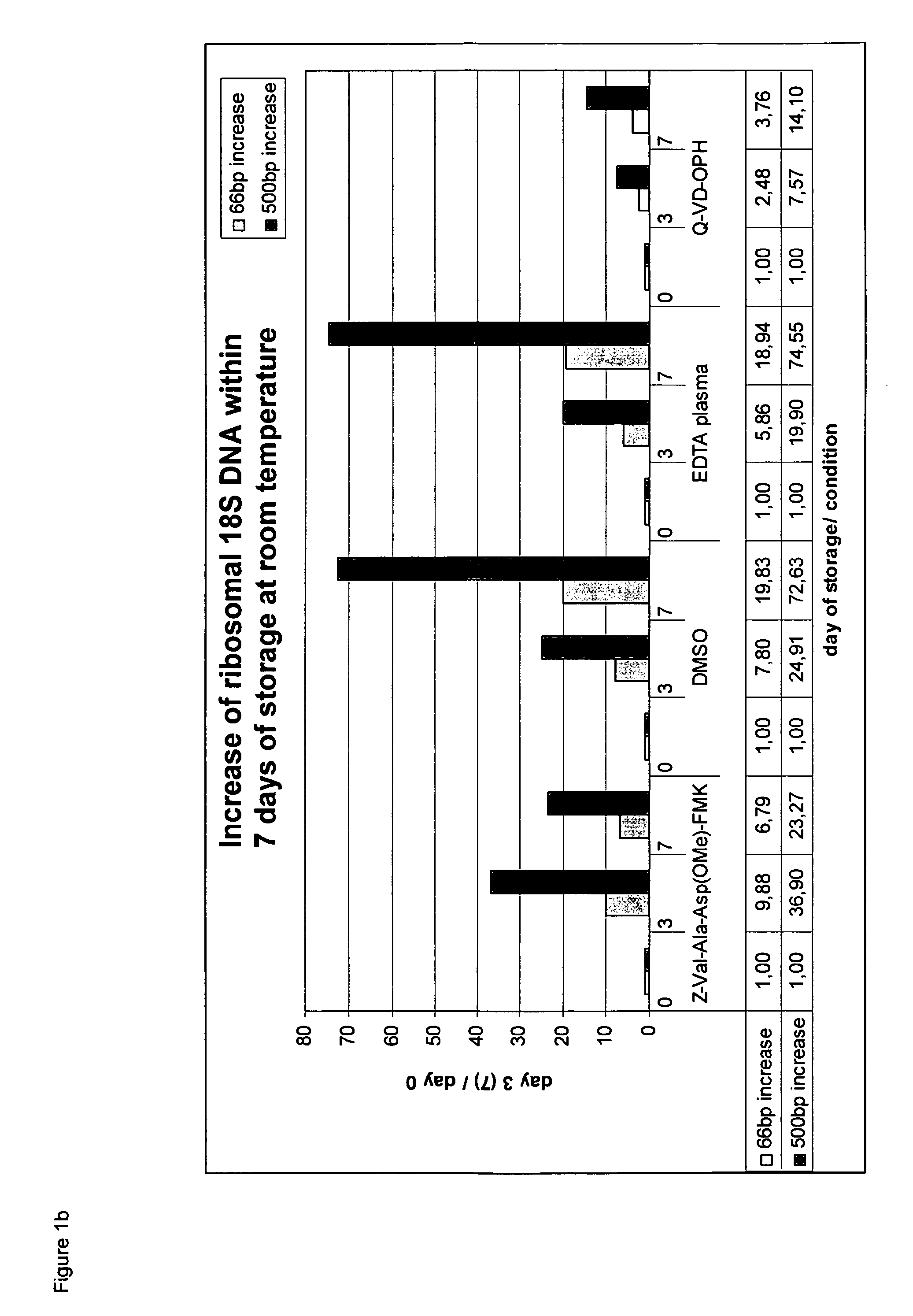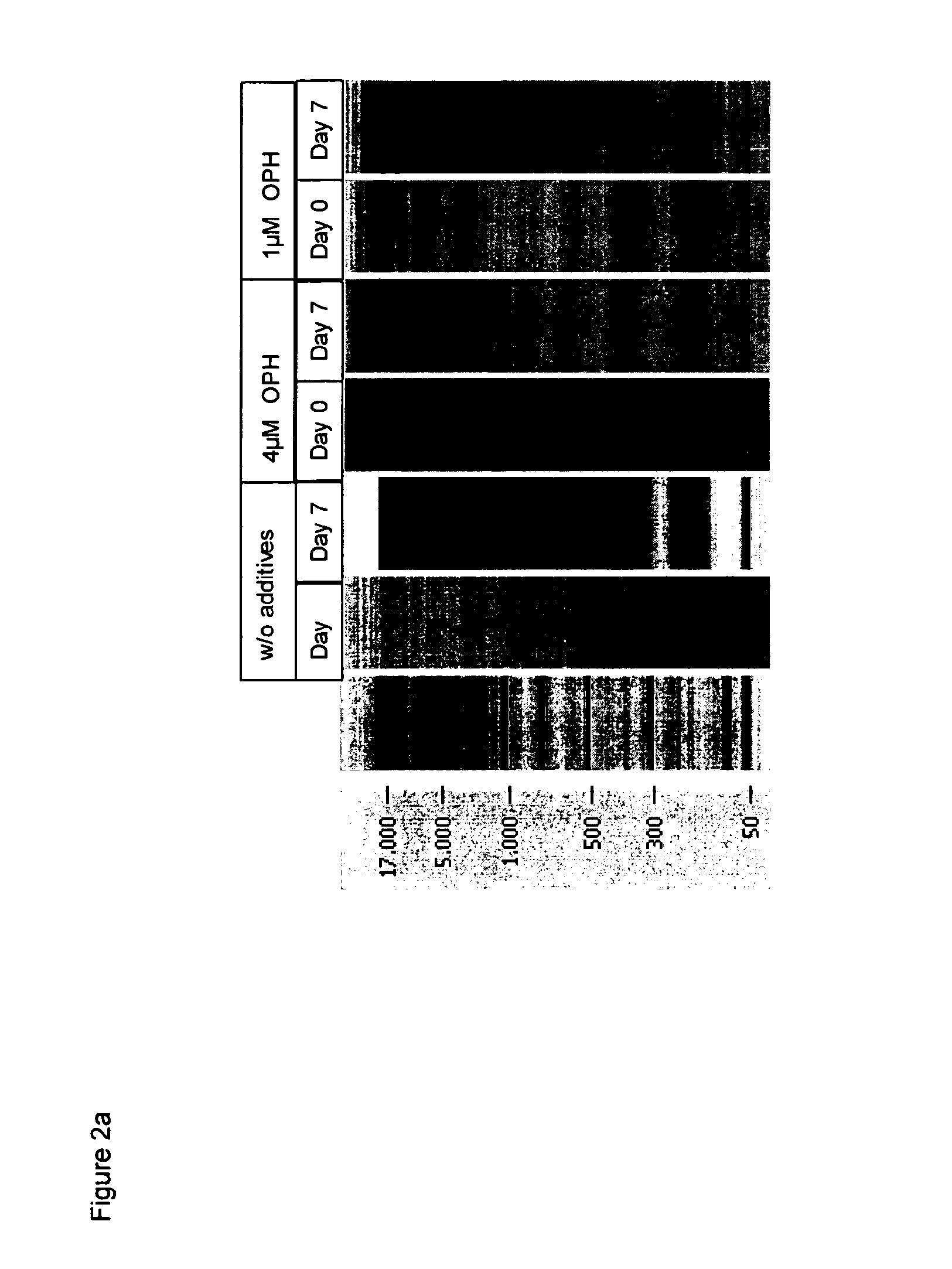Stabilisation and isolation of extracellular nucleic acids
a technology stabilization, which is applied in the field of stabilisation and isolation of extracellular nucleic acids, can solve the problems of difficult to remove all cells, difficult to obtain an essentially cell-free fraction of a sample, and difficult to obtain all cells, etc., to achieve high efficiency in stabilizing the extracellular nucleic acid population, avoid or at least significantly reduce the contamination of genomic dna contamination
- Summary
- Abstract
- Description
- Claims
- Application Information
AI Technical Summary
Benefits of technology
Problems solved by technology
Method used
Image
Examples
example 1
Stabilization by the Addition of a Caspase-Inhibitor
[0217]Two different oligopeptides, Q-VD-OPh and Z-Val-Ala-Asp(OMe)-FMK acting as broad spectrum caspase-inhibitors, were tested:
TABLE 6Tested caspase inhibitorsinhibitormolecularenameweightsolubilitystructureQ-VD-OPH513.4920 mM, add 97 μl DMSO 10 mM, add 194 μl DMSO 5 mM, add 388 μl DMSOZ-Val-Ala- Asp(Ome)- FMK467.4920 mM, add 107 μl DMSO 10 mM, add 214 μl DMSO 5 mM, add 428 μl DMSO
[0218]Each tested caspase inhibitor was added to whole blood samples (20 μM end concentration in 10 ml blood; blood was collected into Vacutainer K2E Tubes; BD). The whole blood sample was processed as described in section I, see 2. (plasma preparation) and 3. (nucleic acid isolation).
Results of the Chip Gel Electrophoresis
[0219]The eluted circulating cell-free DNA was separated by size using chip gel electrophoresis (for details on the method see above, I, 4.1). FIG. 1a shows the obtained results. The DMSO control and the K2E blood (not treated accord...
example 2
Influence of Lower Concentrations of Caspase-Inhibitor Q-VD-OPh on Blood Stability
[0225]In this example, lower concentrations of the caspase inhibitor Q-VD-OPh was tested in combination with glucose, wherein the glucose was added as combination partner to support that the blood cells stay alive (by preventing cell damage). 21.4 mM glucose and 4 μM, 1 μM or no Q-VD-OPh were added to 10 ml blood drawn into BD Vacutainer tubes and stored for up to 7 days at room temperature. The whole blood sample was processed as described in section I, see 2. (plasma preparation) and 3. (nucleic acid isolation).
Results of the Chip Gel Electrophoresis
[0226]The eluted DNA was separated by size using chip gel electrophoresis (for details on the method see above, I, 4.1). FIG. 2a shows that compared to the control samples, wherein no caspase inhibitor was added, already 1 μM caspase inhibitor significantly reduced the genomic DNA release / fragmentation on day 7. The effect is improved if 4 μM caspase inhi...
example 3
Stabilizing Blood Cells by Osmotic Effects
[0229]Surprisingly it was also found by the inventors that blood cells can be stabilized by adding a reagent that acts as a hypertonic medium in whole blood. Generating a hypertonic medium by the addition of, for example, hydroxylated organic compound(s) to whole blood results in a slight release of water from the contained blood cells and results in increased stability by cell shrinking. It is assumed that said cell shrinking stabilises the cells against mechanical forces.
[0230]Dihydroxyacetone (DHA) is an intermediate product of the fructose metabolism and its phosphate form dihydroxyacetone phosphate (DHAP) is part of the glycolysis. DHA was tested as hypertonic agent. Addition of this reagent sensitively forces blood cells to shrink without damaging them. DHA was first dissolved in PBS (purchased from SIGMA-Aldrich Kat. No: D8537) or 3×MOPS (diluted from 1 litre of 10×MOPS: 200 mM MOPS; 50 mM NaAc, 10 mM EDTA; pH 5; assuming that an acid...
PUM
| Property | Measurement | Unit |
|---|---|---|
| temperatures | aaaaa | aaaaa |
| temperature | aaaaa | aaaaa |
| elution volume | aaaaa | aaaaa |
Abstract
Description
Claims
Application Information
 Login to View More
Login to View More - R&D
- Intellectual Property
- Life Sciences
- Materials
- Tech Scout
- Unparalleled Data Quality
- Higher Quality Content
- 60% Fewer Hallucinations
Browse by: Latest US Patents, China's latest patents, Technical Efficacy Thesaurus, Application Domain, Technology Topic, Popular Technical Reports.
© 2025 PatSnap. All rights reserved.Legal|Privacy policy|Modern Slavery Act Transparency Statement|Sitemap|About US| Contact US: help@patsnap.com



